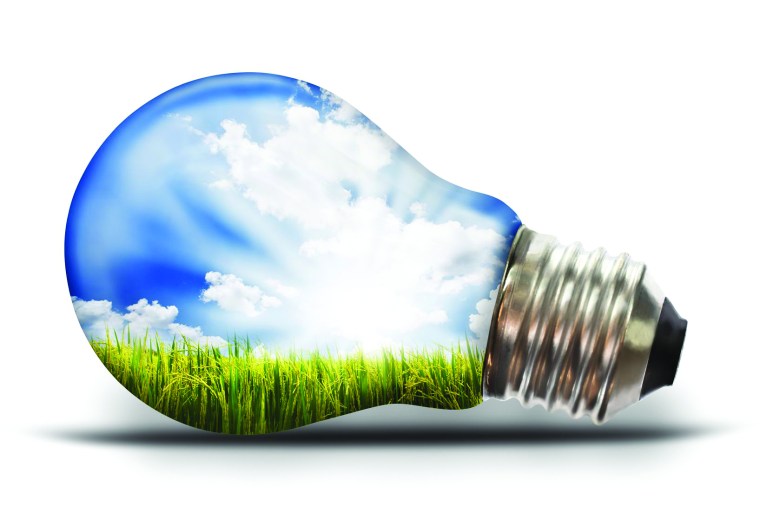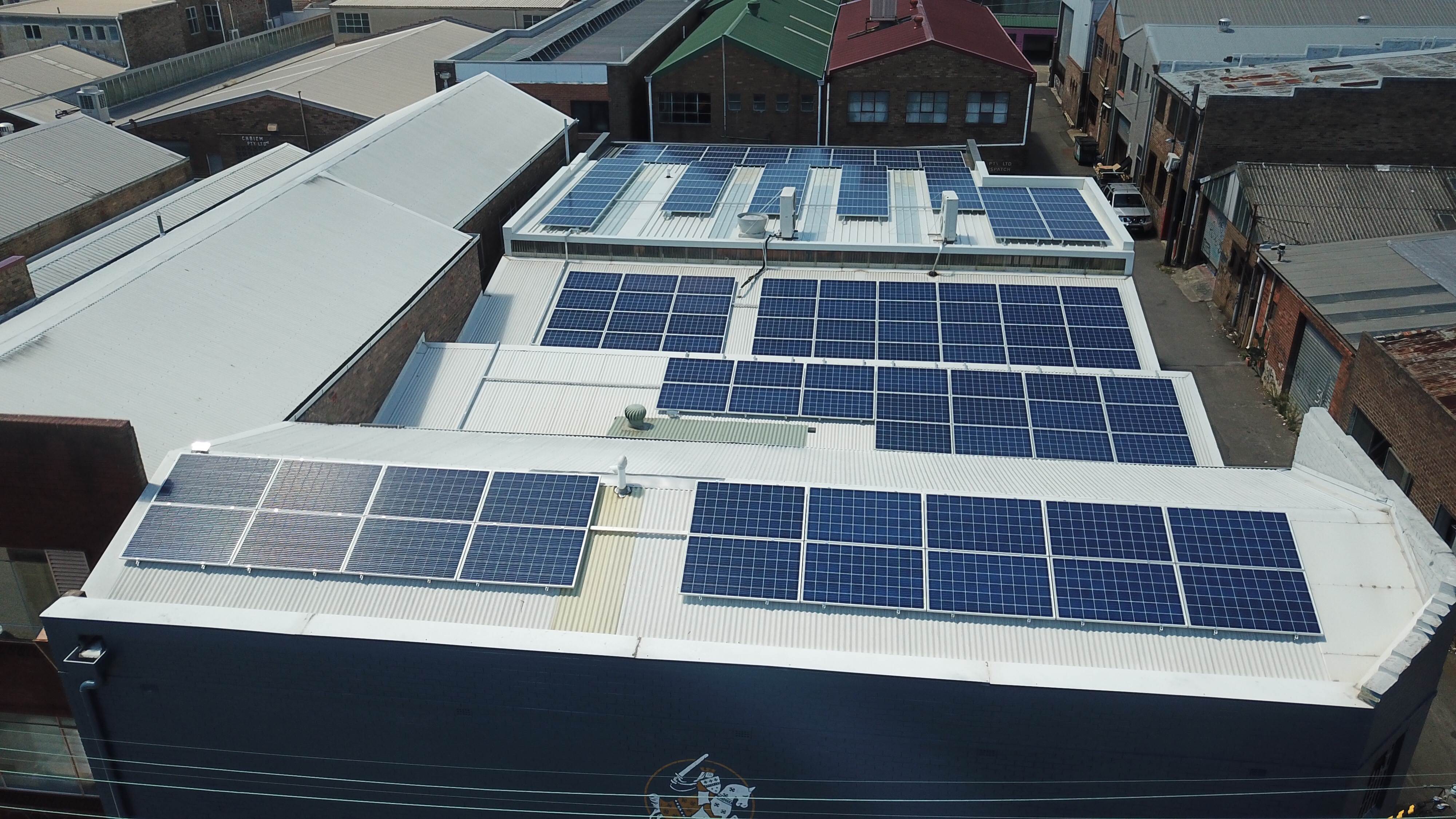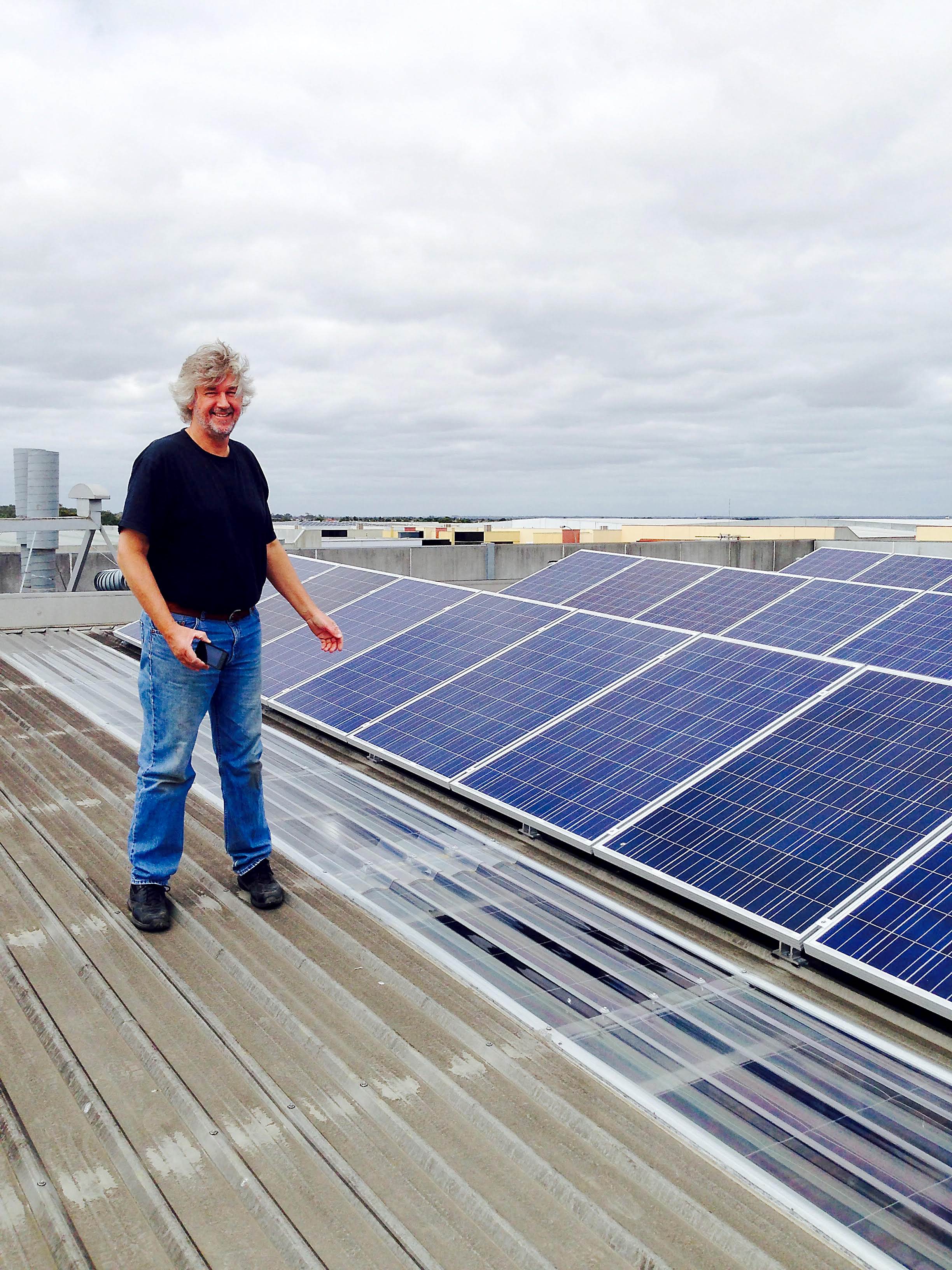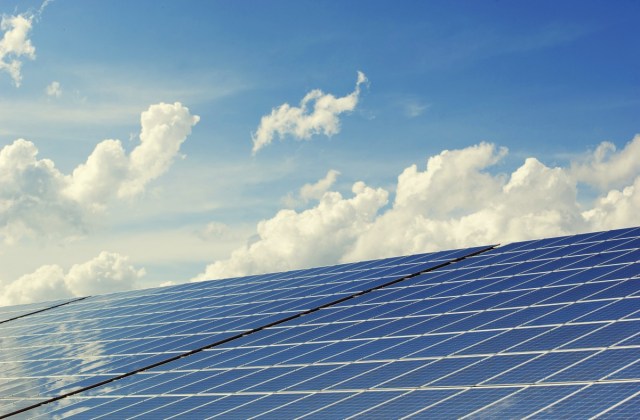
Faced with surging energy costs, more Australian printers are choosing solar power as their weapon of choice. In the past few months, we have seen business after business make the move, from paper embellisher Tafeda to innovative Melbourne printer Excel Australasia to regional printer Industrial Colour Print, and Instant Colour Print from Canberra. The Newcastle based Jennings Print is the latest, installing a system with a total capacity of 65kwh.
These companies now have some self-sufficiency in energy, and even putting power back into the grid. They may not suffer in any power outages whether unintended or not, such as those which impacted on SA printers last year.
The horror stories from printers using the grid supplied power are consistent; Fishprint, a Melbourne based printer, cut its energy use by a third but still saw its bills nearly double. A printer in Sydney, Rip Graphics, said its energy company wrongly charged them for two accounts for three years. North Queensland outfit Lotsa Print saw its bills rise by 27 per cent – despite consumption decreasing by 18 per cent. A Melbourne based printers faces an increase from its current $120,000 to $360,000 per annum once its existing contract expires.
Despite Australia being energy resource rich, energy prices are rising rapidly, for business and the public. Energy intensity is a measure of how efficiently energy is used for a nation’s economy, calculated as units of energy per unit of GDP. The higher energy intensity is, the higher the price of converting energy into profit. Last year, Australia’s manufacturing industry was reported to be the most energy-intensive in the world and was the only developed country to see an increase in energy consumption between the years 2000 and 2015, according to research from the International Energy Agency.
In 2000, Australian manufacturing had the third highest energy intensity level at 15.3 megajoules, a figure which rose 1.5 per cent to become the world’s highest at 15.52 megajoules in 2015. The country’s manufacturing energy consumption is actually lower than that of other major manufacturing nations such as the US, but is inefficiently used.
The ACCC estimates that in 2016-17, Queenslanders will be paying the most for their electricity, followed by South Australians and people living in NSW. Victorians will have the lowest electricity bills. This is due to a range of factors including usage patterns in various states, including the prevalence of gas usage in Victoria in particular.
The ACCC has urged action on the energy crisis, with the results for its current inquiry into power pricing due in June. The print industry is also seeing the negative effects of energy. A ProPrint poll in August last year revealed that nearly three quarters of all printers say there needs to be legislation to fix the energy crisis.
Faced with a tsunami of concern from its members, Printing Industries Association of Australia (PIAA) has called for urgent action on the energy crisis from the government. Andrew Macaulay, CEO of PIAA had an audience with prime minister Malcolm Turnbull at a small business conference, power was at the top of his agenda. He grilled the energy minister and his Labor shadow on the nation’s top rated TV panel show Q&A.
One way printers are fighting back, is with renewable energy. In the last 10 years, solar panels have dropped dramatically in price. In Australia, about $US9bn was invested in large wind and solar projects last year, up 150 per cent from the year before. Rooftop solar installations increased by an additional 1.078 gigawatts, a 50 per cent increase from the year before.
Teresa Del Castillo, marketing manager for Tafeda, one of those that has gone down the solar route, says, “There is the constant going up of electricity and not knowing where it is ending. Secondly, we are currently waste free: recycling, reusing pallets and cartons, and we have customers bring back as many products as possible, and we are also using LED lights. We want to reduce waste and help with global warming.”

Sun to power
Solar panels generate power by converting energy from the sun to power. The conversion takes place within the material the panels consist of and in most cases systems are connected to the mains power supply through an inverter. Users can either install a stand alone system and have it operating with batteries or a back-up generator to supplement the supply, or connect the system to the grid and have the electricity it generates convert from direct current (DC) to alternating current (AC) via an inverter. Panels can be connected to a central converter or multiple micro-inverters installed directly under solar panels.
Businesses with systems use their solar power before using electricity from the grid, and when the panels are not generating enough power to meet load requirements, power is then drawn from the grid. For systems with a battery backup, the inverter regulates the charge of batteries, which can store energy for use at night or during blackouts. The output of a system depends on its capacity, size and location, and can range from five or 10 kilowatts (kW) up to a few megawatts (MW). Printers are already encouraged by the PIAA to adopt sustainable practices, through Sustainable Green Print (SGP), the industry body’s environmental certification program which focuses on waste and relevant environmental laws, but Macaulay says they should not have to invest in solar when their taxes already pay for energy infrastructure.
Macaulay says, “The impact of energy affordability and availability on small business remains a critical issue in the sector, and printers are not alone in feeling the potentially devastating impact of the energy crisis on their business. We have an immediate need for action on policy for energy security. The impacts of electricity and gas costs are negative. Printing Industries actively supports any policy that assists printers install solar but we only see it as being made only necessary because of lack of action from the government on a federal and state level on the energy crisis. Rising costs and lack of security in energy have led printers to install and invest in infrastructure, that they have technically already paid for through their taxes.”
Last year ProPrint spoke to Canberra based digital printer Instant Colour Press (ICP) about how solar power has given it serious savings in their first year since installation. The company claims that it has saved a third off energy costs in 18 months.
Suzannah Walton, general manager for ICP says, “Our power bills come to $18,000 a year, and we are saving $8000-9000 a year. It has cut our bills, although we do have more energy in summer than we do in winter.
“We have 123 panels. We own half of our complex and the panels cover about two thirds of that roof area.
“Dave (owner of ICP) and I are aware of the environment and our impact. We recycle, we are conscious of doing the right thing and passionate about reducing our carbon footprint. Additionally we have also the bills we are saving, it is a big investment but it will be paid off in four or five years.”
Most recently, Sydney embellisher Goldcraft Embossing installed 144 solar panels, with 40 kilowatts in capacity in February. In the two months since it made the move, the company says it has already seen an impact on its power bills.
Mark Steuer, director and co-owner of Goldcraft says, “We were prompted by rising energy costs. It is a fairly big investment but we intend to stay in this building for the next five years, the way it works out it will be paid off in around four to five years.
“We are taking steps to make our company more energy efficient.
“We have saved around 20 per cent off our last electricity bill. Right now at this time of the year, the days are getting shorter and in October through to February we will generate more energy, but even now we are finding that it is worth it.
“I would predict that it will continue to save roughly about 20 to 25 per cent off our power costs. The early signs are looking good.”
Paper embellishing house Tafeda had 39 panels installed, with 10.5 kilowatts capacity.
Marketing manager Del Castillo says, “Our roof is in a good area that is northern facing with lots of sunlight so we can have a good use for that energy. One side faces north, another south and they slope. We have only used a third of that space so we could still have more panels that face north in the future. We hope to be self efficient eventually, so we will see if we decide to install more panels or if we want to have batteries and store the energy we are creating, whatever is more convenient.“We are putting more energy into the grid than we are using right now. It is helping the electricity company and we are seeing the economic benefits there, not straight away as it is an investment over five years.”
Excel Australasia’s headquarters in Melbourne now run on solar power, which drives all of their print production.
Ken Williams, CEO of the company says, “The solar panels covers the whole roof area of our factory. They are powering the manufacturing, and all of our servers at our main business. And we have back-up batteries. Solar is good for the culture of the company as a whole. If we can help the environment while we do business, great. It will also reduce the cost of power over the medium and short term, and the cost of the investment will be recouped.”
Across the board, no printer ProPrint has spoken to seems to want to install battery systems until prices drop, with the exception of Excel Australasia. Batteries have been forecast to become more affordable as prices are estimated to drop 10 to 15 per cent. Capacity is also set to improve. Late last year South Australia installed the world’s largest single battery with Tesla and Neoen. Following that, Victoria has signed a deal with Tesla to install a smaller 20-megawatt battery and Queensland is looking into installing one larger than 100 megawatts.

Dropped
Harry Dam, owner of The Wrapping Company says, “The cost of solar has dropped dramatically and it always will, it is now even cheaper. Whatever we choose to do as a business, it cannot be a burden to the company, it has to become a positive. The cost of batteries outweigh the cost of putting energy back into the grid and the kilowatt hours that are used, stored and saved are still not higher. Other businesses may be able to justify it in the case of blackouts. In 12 months, battery prices may drop and some are fantastic, some of them are being made in Thailand. The price will probably drop and their capacity will go up as the demand for them grows and they are made more. Right now we do not have to use a backup source for power – if we go down, we can just stop printing for a while, it is not a matter of life or death like it would be in say, food storage.”
Steuer of Goldcraft says, “We are a highly energy intensive business, with the embossing machinery constantly going. The panels cover about a fifth of our energy needs. We do not have battery storage yet, but it is not necessary, we use up all of the energy with our equipment going all day.”
Del Castillo of Tafeda says “It is fantastic to see how much energy is being harvested. We have more energy in summer, in winter we will probably have less. When we are working next year, we will not have enough energy to use, which is why we need a battery. But it is expensive, so we are doing it in steps rather than one big hit.”
In addition to environmental and financial benefits, printers are also seeing a positive effect for business.
Dam says, “It is part of our marketing strategy. Most of our customers are glad to be working with a carbon neutral company, it is a real justification for choosing to use our services. It has not affected costs, it may even reduce them in the future which customers could see. It is an all round win win.”
To other printers looking to install solar, Dam says, “It is a no brainer, it you are looking to stay in your premises for longer than five years. I just gave another printer advice on it, they were able to work with their landlord. Here where we are in Braeside, there are hundreds of factories and more and more of them are getting solar. Maybe in the future we could have a microgrid among ourselves with a collective battery, where we do not have to rely on the main grid and be independent.”
Del Castillo notes, “With the panels, we were able to support local business. It was a young entrepreneur partnered with another business who set it up. We are always happy to help locals.
“If the panels help our image, that is a bonus but it is not our purpose. We did it because it is the right thing to do. If customers see that we are using renewable energy and are excited about that, that is great.”
Ken Williams says on Excel’s solar panels, “It is having a positive effect on the business. It is the small things you do not see: the staff are excited that the company cares enough to make a difference, to see that we are reducing our footprint. Our account managers are going out and seeing customers and they are excited about it. Their communications material is being produced in the most environmentally friendly way but at no additional cost.
“We know our industry uses a lot of power. Who knows where commerce energy prices will be in two years? Alternative energy sources are a way to safeguard against risings costs and it is paid off in three to five years. It has a positive effect on our staff and our community. Our industry uses a lot of power – let’s be the leaders and make a difference.”
Comment below to have your say on this story.
If you have a news story or tip-off, get in touch at editorial@sprinter.com.au.
Sign up to the Sprinter newsletter



